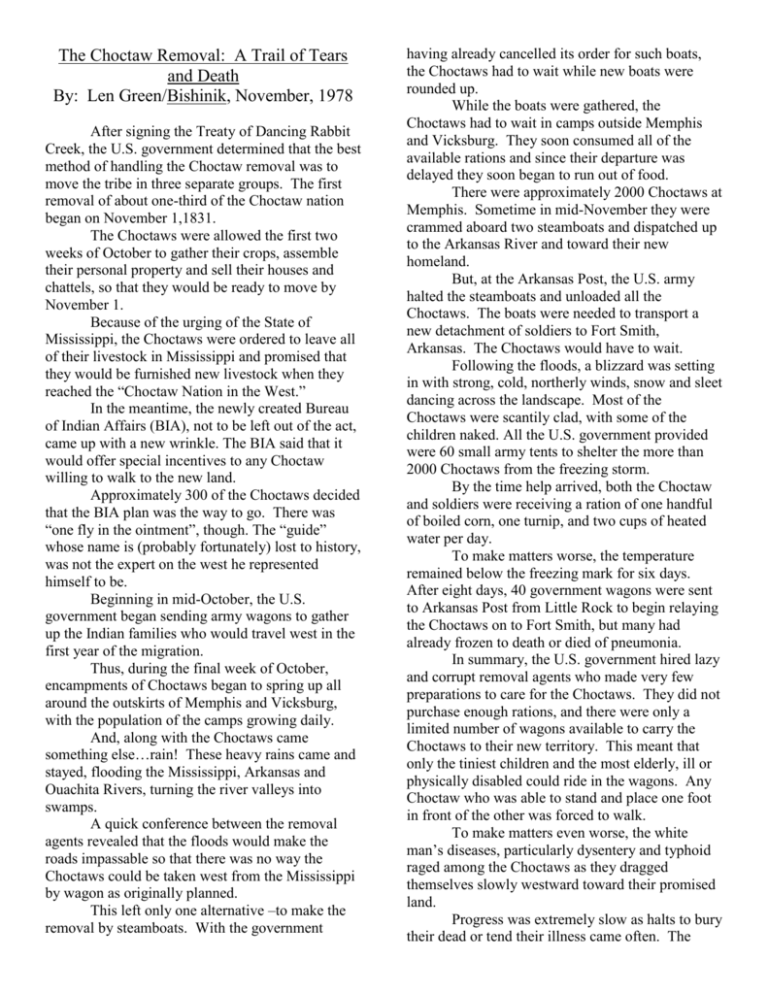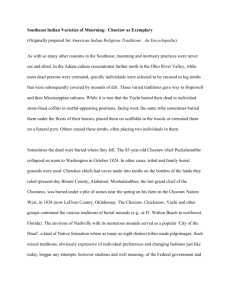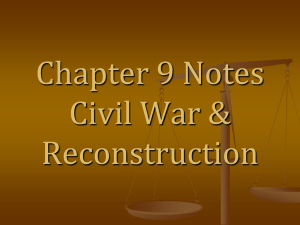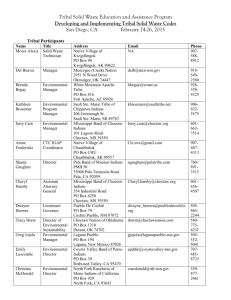The Choctaw Removal: A Trail of Tears and Death
advertisement

The Choctaw Removal: A Trail of Tears and Death By: Len Green/Bishinik, November, 1978 After signing the Treaty of Dancing Rabbit Creek, the U.S. government determined that the best method of handling the Choctaw removal was to move the tribe in three separate groups. The first removal of about one-third of the Choctaw nation began on November 1,1831. The Choctaws were allowed the first two weeks of October to gather their crops, assemble their personal property and sell their houses and chattels, so that they would be ready to move by November 1. Because of the urging of the State of Mississippi, the Choctaws were ordered to leave all of their livestock in Mississippi and promised that they would be furnished new livestock when they reached the “Choctaw Nation in the West.” In the meantime, the newly created Bureau of Indian Affairs (BIA), not to be left out of the act, came up with a new wrinkle. The BIA said that it would offer special incentives to any Choctaw willing to walk to the new land. Approximately 300 of the Choctaws decided that the BIA plan was the way to go. There was “one fly in the ointment”, though. The “guide” whose name is (probably fortunately) lost to history, was not the expert on the west he represented himself to be. Beginning in mid-October, the U.S. government began sending army wagons to gather up the Indian families who would travel west in the first year of the migration. Thus, during the final week of October, encampments of Choctaws began to spring up all around the outskirts of Memphis and Vicksburg, with the population of the camps growing daily. And, along with the Choctaws came something else…rain! These heavy rains came and stayed, flooding the Mississippi, Arkansas and Ouachita Rivers, turning the river valleys into swamps. A quick conference between the removal agents revealed that the floods would make the roads impassable so that there was no way the Choctaws could be taken west from the Mississippi by wagon as originally planned. This left only one alternative –to make the removal by steamboats. With the government having already cancelled its order for such boats, the Choctaws had to wait while new boats were rounded up. While the boats were gathered, the Choctaws had to wait in camps outside Memphis and Vicksburg. They soon consumed all of the available rations and since their departure was delayed they soon began to run out of food. There were approximately 2000 Choctaws at Memphis. Sometime in mid-November they were crammed aboard two steamboats and dispatched up to the Arkansas River and toward their new homeland. But, at the Arkansas Post, the U.S. army halted the steamboats and unloaded all the Choctaws. The boats were needed to transport a new detachment of soldiers to Fort Smith, Arkansas. The Choctaws would have to wait. Following the floods, a blizzard was setting in with strong, cold, northerly winds, snow and sleet dancing across the landscape. Most of the Choctaws were scantily clad, with some of the children naked. All the U.S. government provided were 60 small army tents to shelter the more than 2000 Choctaws from the freezing storm. By the time help arrived, both the Choctaw and soldiers were receiving a ration of one handful of boiled corn, one turnip, and two cups of heated water per day. To make matters worse, the temperature remained below the freezing mark for six days. After eight days, 40 government wagons were sent to Arkansas Post from Little Rock to begin relaying the Choctaws on to Fort Smith, but many had already frozen to death or died of pneumonia. In summary, the U.S. government hired lazy and corrupt removal agents who made very few preparations to care for the Choctaws. They did not purchase enough rations, and there were only a limited number of wagons available to carry the Choctaws to their new territory. This meant that only the tiniest children and the most elderly, ill or physically disabled could ride in the wagons. Any Choctaw who was able to stand and place one foot in front of the other was forced to walk. To make matters even worse, the white man’s diseases, particularly dysentery and typhoid raged among the Choctaws as they dragged themselves slowly westward toward their promised land. Progress was extremely slow as halts to bury their dead or tend their illness came often. The leaders of the escort party did not know the routes they were to follow and constantly held up the party as they studied maps or consulted residents of the area. As a result of the sickness, deaths and pauses caused by the escort, it took almost three months for the Choctaws to drag themselves the 150 miles. Thus, by April 1, 1832, all of the Choctaws who had remained alive through the first removal were located in their new homeland .Of the 6,000 who began this march, only about 4,000 survived the journey. 2,000 Choctaws had died on the way. And this was only the first of three stages of the Choctaw removal. There were two more years of removal to go… When the first wagons reached Little Rock, a famous term that would eventually burn itself into history was born. In an interview with a Kansas Gazette reporter, one of the Choctaw Chiefs was quoted as saying that the removal to that point had been a “trail of tears and death”. Question for Cosideration 1. What is the name of the treaty that removed the Choctaws? 5. Describe some of the conditions that the Choctaw faced in the holding camps and forts: 6. How long did it take the first group of Choctaws to move to Indian Territory? 7. MATH QUESTION! What percentage of Choctaws died in the first passage? 8. What did you read that indicates that more Choctaws will probably die after this group? 2. Why might the government offer special bonuses to those who were willing to walk? 3. What was wrong with the guide hired by the government? 9. “…the policy of the government toward the red man is not only liberal, but generous. He is unwilling to submit to the laws of the States and mingle with their population. To save him from this alternative, or perhaps utter annihilation, the government kindly offers him a new home, and proposes to pay the whole expense of his removal and settlement.”-President Andrew Jackson. Did the U.S. government live up to this promise by the President? Why or why not? What examples can you give from this reading? 4. Why did most Choctaws end up walking anyway?







